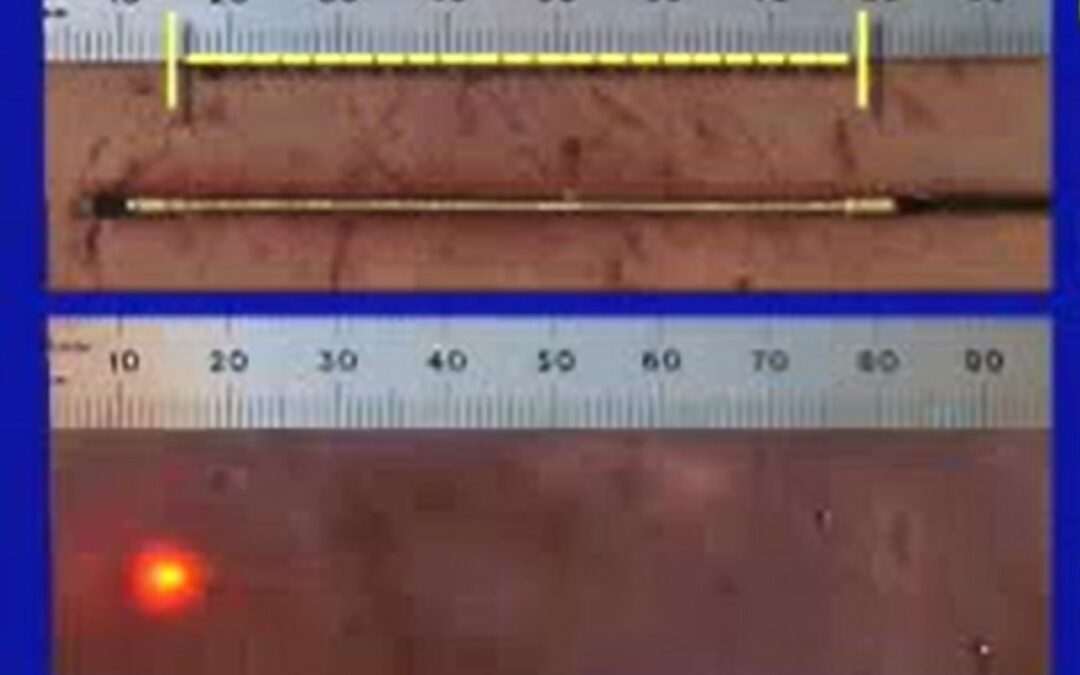Endovenous Laser Ablation (EVLT or EVLA)
The laser filament uses a heating element which is quite variable. Laser devices have frequencies that range from 810 to 1470 nanometers (nm). They do not cause shrinkage of the blood vessel, but rather causes clot formation in the blood vessel, which then causes the vessel to occlude and block the flow of blood. Laser ablation use to be associated with a lot more lingering pain than radiofrequency ablation because the strong energy of the laser could cause some collateral damage to the surrounding tissues. However, with technological improvements, many EVLT lasers may still cause slightly more bruising but cause less pain.
Here are additional references that looked at empirical studies of laser treatment compared to radiofrequency ablation (Otherwise known as “VNUS” or “Venefit”):
- National Center for Biotechnology Information (Article 1)
- National Center for Biotechnology Information (Article 2)
- Journal of Vascular and Interventional Radiology
Radiofrequency ablation (RFA)
Radiofrequency ablation uses radiofrequency energy in 20-second bursts via a tiny catheter inserted into the vein. This energy targets the collagen in the vein wall. Targeting the vein wall causes the vein to shrink around the catheter as the surgeon treats the vein. The vein actually closes while the surgeon performs the treatment. However, the process relies on direct contact of the catheter and the vein wall. In order to do this, the surgeon applies external compression to the outside of the vein using a tumescent fluid. After radiofrequency ablation, the vein is smaller and thicker and it no longer carries blood. With time, surrounding tissues absorb the vein and it disappears.
Similarities of EVLT and RFA
Radiofrequency ablation (RFA) and endovenous laser therapy (EVLT) techniques are both similar in that they are “minimally invasive” procedures that treat venous insufficiency of the large superficial veins –the greater and lesser saphenous veins specifically. These are the typical veins that are the source of varicose veins. Unlike older surgical-based techniques, both laser ablation and radiofrequency ablation involve no incision and require minimal recovery time. Usually, patients find ablation relatively painless. Both methods have a very high rate of success (closure of the vein). Both are superior to traditional methods of vein stripping.
Vein ablation procedures are typically performed in the office rather than in an operating room. Both the laser and radiofrequency ablation procedures use thermal energy to close the blood vessel from the inside so that the re-fluxing or failing vein are no longer functional. The body eventually absorbs the closed vein and the absence of the failing vein reduces patient symptoms by decreasing venous pressure in the leg.
Differences of EVLT and RFA
The differences between these two procedures are very minimal. However, in some rare circumstances, one may be more optimal over another. There is a general consensus among practitioners that laser ablation may be better in cases where the vein has a very large diameter or there are clots or vein webs. This is because the catheter may not be in good contact with the vein wall. In these cases the surgeon may choose to use EVLT. However, RFA is known to cause less bruising, has a lower risk for perforation, and is associated with less post op pain. Therefore, sometimes RFA may be preferred.
At the San Francisco Vein Center we use both laser ablation and radiofrequency ablation for treating varicose veins depending on the needs of the patient.

